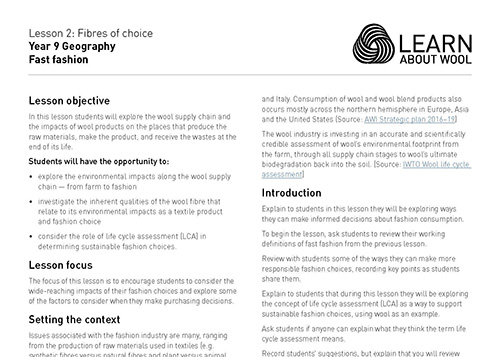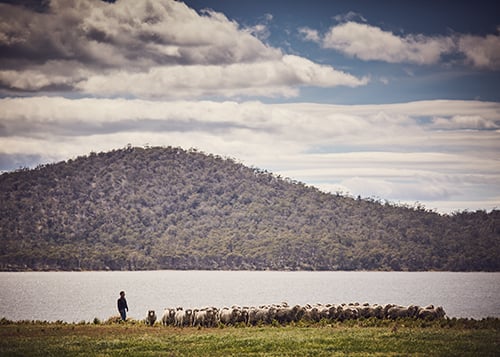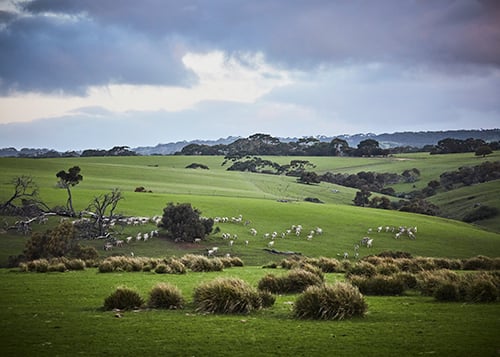Issues associated with the fashion industry are many, ranging from the production of raw materials used in textiles (e.g. synthetic fibres versus natural fibres and plant versus animal fibres) and the processes and technology used to create garments (and the conditions under which textiles and garments are made), their care during use and management at their end of life (i.e. waste management).
The focus of this lesson is to encourage students to consider the wide-reaching impacts of their fashion choices and explore some of the factors to consider when they make purchasing decisions.
During this lesson students will have the opportunity to:
- explore the environmental impacts along the wool supply chain — from farm to fashion
- investigate the inherent qualities of the wool fibre that relate to its environmental impacts as a textile product and fashion choice
- consider the role of life cycle assessment (LCA) in determining sustainable fashion choices.
Links to the Australian Curriculum:
- Evaluate sources for their reliability, bias and usefulness and select, collect, record and organise relevant geographical data and information, using ethical protocols, from a range of appropriate primary and secondary sources (ACHGS064)
- Represent multi-variable data in a range of appropriate forms, for example scatter plots, tables, field sketches and annotated diagrams, with and without the use of digital and spatial technologies (ACHGS065)











